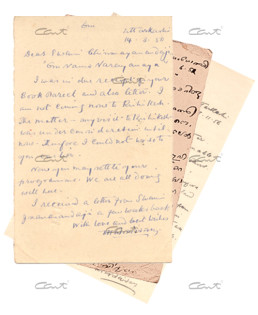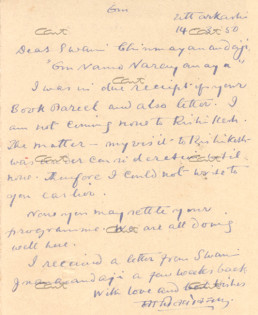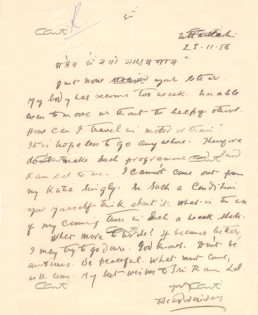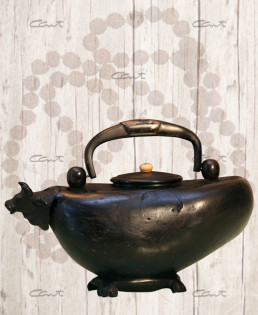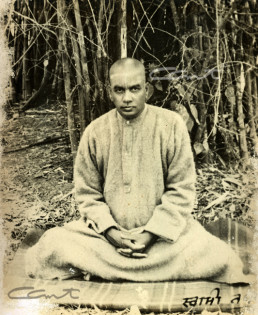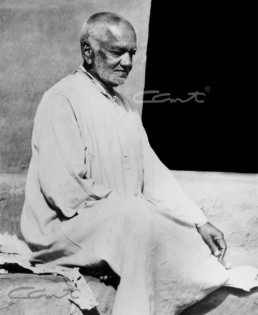
Introduction
“A God without temples, a Veda without language was this master mine. A monumental expression of an ideal Vedantic Teacher.” Thus did Swami Chinmayananda describe his Guru, Swami Tapovan Maharaj.
Born in Kerala, the birthplace of Sri Adi Sankaracharya, Swami Tapovanam chose to reside in Uttarakasi and Gangotri, in close proximity with the divine and unsullied beauty of Nature. He walked the rugged mountain paths, in communion with the snowy peaks, reveling in spiritual heights.
It was Sri Swami Tapovanam who guided Swami Chinmayananda to explore the subtle depths of the Upanishads. In the student’s own words, it was “Sree Swami Tapovanji Maharaj, who guided me to the end and pushed me into the beyond.”
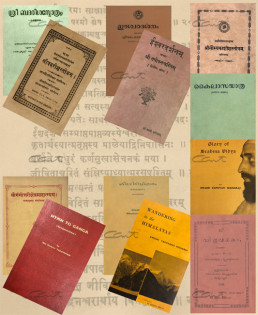
His Works
Tapovan Maharaj recorded his experiences of travelling to Mount Kailas on foot in a book called Kailasa Yatra,written in Malayalam. Himagiri Viharam (Wanderings in the Himalayas), also in Malayalam, describes his travels all over the Himalayas. These books are studded with philosophical reflections and invaluable spiritual insights.
Ishwara Darshanam is an autobiographical work in chaste Sanskrit, written in the third person. Sri Saumyakasisha Stotram, Sri Badarisha Stotram (Hymn to Badrinath), Hymn to Ganga and Sri Gangotri Kshetra Mahatmyam (Glory of Gangotri) are in Sanskrit verse form.
Besides these major works, he had also written commentaries on Shandilya Bhakti Sutra and some of the Upanishads, but these have not come down to us.
His Letters
Though he preferred a life of solitude, Swami Tapovanam did write letters to some of the devotees who sought spiritual guidance from him. Letters to Householders is one such compilation of letters originally written in Malayalam to Perumbavur Krishna Pillai, who was later known as Swami Mahadeva Vanam. He also kept in touch with Swami Chinmayananda through carefully handwritten postcards.
Swami Tapovanam sent a detailed hand-written message to bless the participants of the first jnana yajna in Pune in 1951. He sent another such message on the occasion of the jnana yajna on Mandukyopanishad in Delhi. The brief write up about his visit to Ramana Maharshi was in reply to Swami Chinmayananda’s request on behalf of the magazine Call Divine, to be published on Ramana Jayanti in January 1953.
Artefacts
Being the epitome of vairagya, Swami Tapovanam followed sannyasa dharma very rigorously. As a result, he had very few possessions.
Just the most basic necessaries of life, like a kamandalu, an asana of deer skin, a mat and a pair of spectacles that he used to protect his eyes from the blinding glare of the sun amidst the snowy terrains he regularly traversed.
A thin mattress and a blanket served him during the Himalayan winter months.
He also had an old and battered trunk to store some of these items. These artefacts are preserved in the Chinmaya Archives.
Photographs of Swami Tapovanam
There are very few photographs that exist of Swami Tapovanam. The Chinmaya Archives is pleased to share its collection of photographs of this great Saint.
To view this collection please click here.
A Rare Video
Thanks to our friends at the Divine Life Society, we are pleased to present an extremely rare video of Swami Sivananda and Swami Tapovanam together.
The person speaking in this video is
Swami Chidananda, who was the President of Divine Life Society, after Swami Sivananda.
